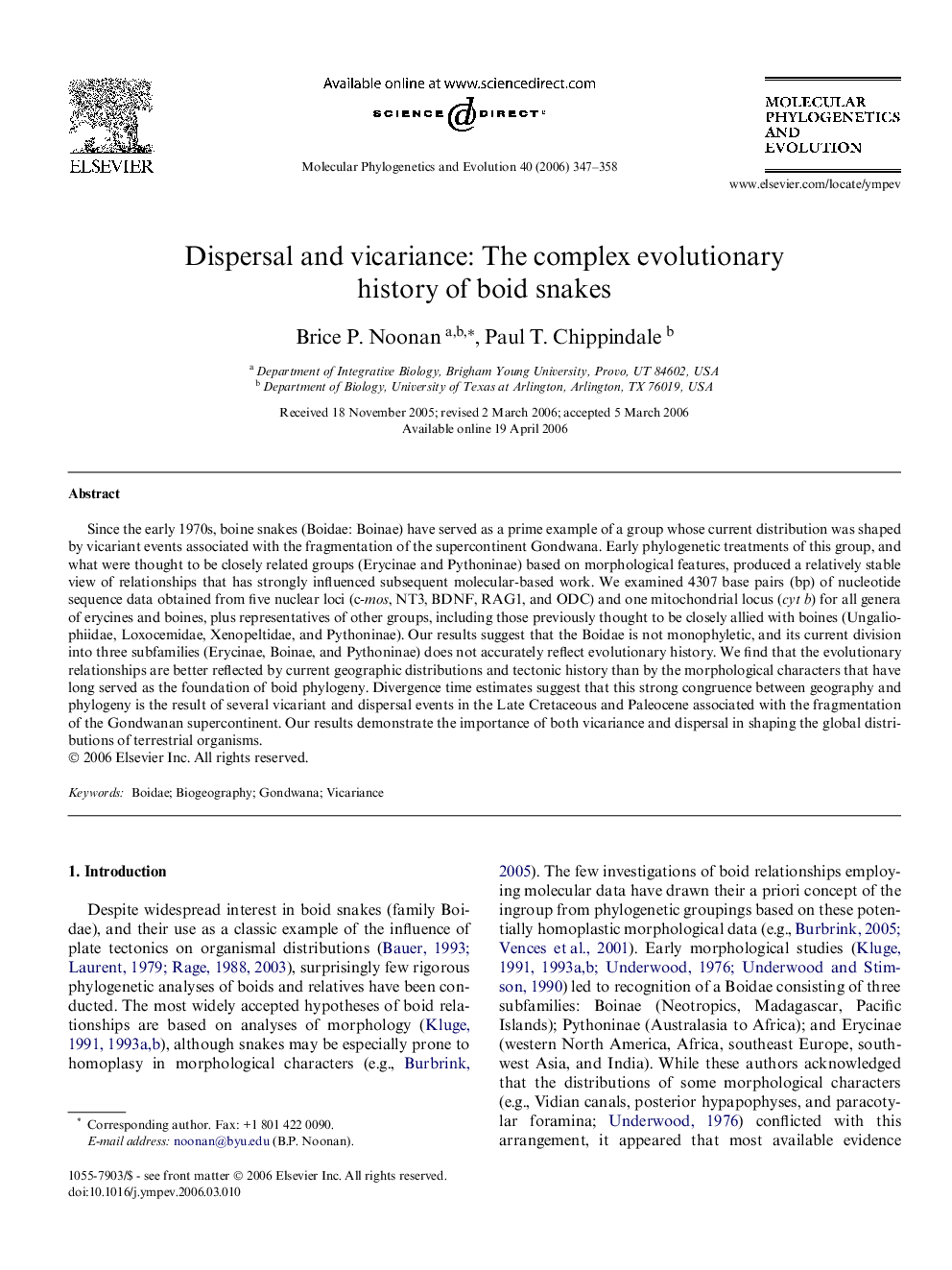| Article ID | Journal | Published Year | Pages | File Type |
|---|---|---|---|---|
| 2835965 | Molecular Phylogenetics and Evolution | 2006 | 12 Pages |
Since the early 1970s, boine snakes (Boidae: Boinae) have served as a prime example of a group whose current distribution was shaped by vicariant events associated with the fragmentation of the supercontinent Gondwana. Early phylogenetic treatments of this group, and what were thought to be closely related groups (Erycinae and Pythoninae) based on morphological features, produced a relatively stable view of relationships that has strongly influenced subsequent molecular-based work. We examined 4307 base pairs (bp) of nucleotide sequence data obtained from five nuclear loci (c-mos, NT3, BDNF, RAG1, and ODC) and one mitochondrial locus (cyt b) for all genera of erycines and boines, plus representatives of other groups, including those previously thought to be closely allied with boines (Ungaliophiidae, Loxocemidae, Xenopeltidae, and Pythoninae). Our results suggest that the Boidae is not monophyletic, and its current division into three subfamilies (Erycinae, Boinae, and Pythoninae) does not accurately reflect evolutionary history. We find that the evolutionary relationships are better reflected by current geographic distributions and tectonic history than by the morphological characters that have long served as the foundation of boid phylogeny. Divergence time estimates suggest that this strong congruence between geography and phylogeny is the result of several vicariant and dispersal events in the Late Cretaceous and Paleocene associated with the fragmentation of the Gondwanan supercontinent. Our results demonstrate the importance of both vicariance and dispersal in shaping the global distributions of terrestrial organisms.
